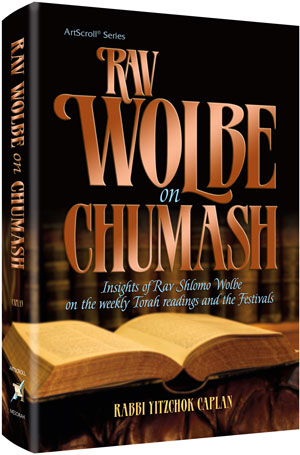Thursday, January 22, 2009
160 - Vaeira
Thursday, January 15, 2009
159 - Shemos
The very first time that Hashem spoke to Moshe, He revealed Himself in a burning bush. Rashi (Shemos 3, 2) explains that Hashem specifically chose to reveal Himself in a bush as opposed to a more impressive tree, because He too "feels anguish" when the Jewish People suffer. Rav Wolbe (Shiurei Chumash) comments that even when Hashem, so to speak, hides His presence from the Jewish People and allows them to suffer, nevertheless, he feels their every pain.
The Gemara in Brachos (3a) tells us that every time the Bnei Yisroel answer, "Amen. Yehei shmei raba" Hashem exclaims, "Woe unto my children for I have destroyed their Bais Hamikdosh and exiled them among the nations. Moreover, Hashem does not merely feel the suffering of the entire Jewish nation as a whole; He also feels the aches and pains of every individual. The Mishna in Sanhedrin (6, 5) states, when a person has a headache or a pain in his arm, Hashem says, "My head is heavy, My arm is heavy."
One of the basic ideas behind creation is that Hashem created this world with the desire to be connected to His creations. Being nosei be'ol - sharing people's burden - might be the most common way that Hashem connects to those living in this world. It is for this reason that being nosei be'ol is such a fundamental attribute. Because we are commanded to emulate all of Hashem's attributes, and His primary attribute is one of nesia be'ol, we must make every effort to acquire this trait. Since this is the ultimate manner of emulating Hashem, it is the most difficult middah to master.
The very first story that the Torah tells us about Moshe revolves around his nesia be'ol bechaveiro. Moshe leaves his palatial surroundings to see how his enslaved brethren are faring. Rashi tells us that he, "placed his eyes and heart [toward them] to feel their pain." He saw what was happening and then internalized it in his heart. He didn't merely say, "It must be so hard for you." He felt their pain as if it were his own. Moshe Rabbeinu, the quintessential embodiment of Hashem's attributes, personified this trait of nosei be'ol.
One can and should be nosei be'ol with every Jew in need. Whether rich or poor, healthy or ill, when one is suffering he needs someone with whom he can share his burden. As the war in Israel continues, it behooves us to take a few minutes to internalize what our brothers are feeling. Picture yourself driving toward the store and suddenly hearing an air raid siren go off.
You must jump out of your car and run for shelter within 60 seconds. You see there is no place within reach so you lie down on the sidewalk and cover your head with your hands - and pray with all your might that nothing happens. Likewise, visualize your child, close friend, or family member engaged in hand to hand combat in one of the most treacherous places in the world. He doesn't know what the next turn will bring. Let us emulate our Creator and truly empathize with them; and thereby bring ourselves and the entire world closer to perfection.
Thursday, January 8, 2009
158 - Vayechi
Just before Yaakov's passing, he tells Yosef, "I have given you Shechem as an additional portion, which I captured from the Emori with my sword and bow" (Bereishis 48, 22). Rashi offers an enigmatic explanation; "my sword and bow" refer to Yaakov's wisdom and tefillos. What is the connection between a sword and wisdom and between a bow and tefillos?
Rav Wolbe (Shiurei Chumash) explains the analogy as follows. A sword is sharp and slim and it is therefore an apt description for wisdom. Words of wisdom are clear and concise. A bow is the tool which propels the arrow to great lengths. Similarly, our mouths are the bows which propel our tefillos toward Hashem. We do not need philosophical proofs to authenticate that there is a Creator. The very fact that we daven "into the air" and our tefillos are answered is clear-cut proof of the Omnipresent!
The Mashgiach related that he got to know a Russian convert who shared an amazing story with him. This convert recounted that when he was a student in university he was plagued by many questions and doubts with regard to religion. He was a truth seeker, and these issues bothered him to the extent that he would pray, cry and fast, with the hope of unraveling these mysteries. At some point, he fell asleep during one of his tearful prayers. In his dream the answers to his many questions were revealed to him. This was the impetus for his eventual conversion to Judaism. Tefillah has the quality of an arrow: a true prayer hits its mark and is answered.
Yaakov Avinu felt that the victory in his war against the people of Shechem was due to his Torah study and his tefillos. Yes, he had to pick up a sword and fight (see third Rashi ibid.), but the ultimate determinant as to who would win the war lay in the hands of those who prayed. At the present time, when many of our brothers in Israel are under fire and others are putting their lives on the line fighting in enemy territory, it is incumbent upon each and every one of us to make use of the "ammunition" in our possession. If the situation bothers us as it should, we will make a point of davening in a manner that will give our tefillos the potency of an arrow, thereby protecting our brethren and ensuring a victory for our soldiers on the battlefront.

